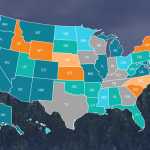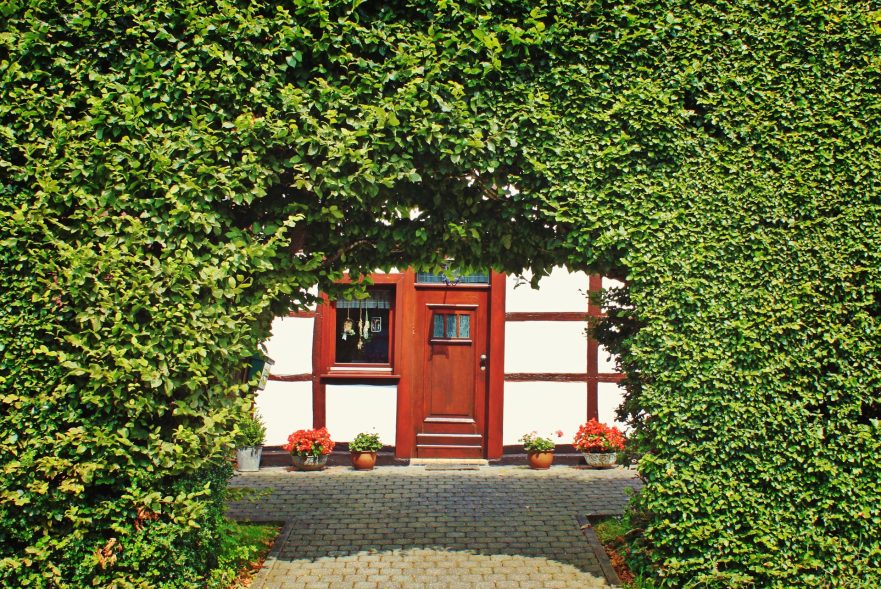Crime Prevention Through Environmental Design, or CPTED, is a method of crime prevention that involves controlling the area surrounding a business and creating strong ties with the local community. CPTED, when practiced effectively, is one of the most successful crime prevention applications for any business, but these strategies can be especially useful for high-risk businesses like cannabis businesses. Utilizing CPTED is a form of proactive security that can deter potential criminals before they commit a crime through facility design and premises management.
First conceptualized in 1971-1972, CPTED can be divided into four key principals identified as “First Generation”: Territoriality; Natural Surveillance; Image and Milieu; and Access Control.
First Generation CPTED Strategies
Territoriality: One way that territory control can be achieved is by creating strong ties with the community. Cannabis business management should engage with their communities and neighboring businesses as a method to reduce crime. Neighbors are often the first to notice signs of trouble, and if a positive line of communication has been made, neighbors can provide an alert to any potential problems.
Natural Surveillance: Proper surveillance over the premises is crucial to a business’ success. To ensure proper surveillance, cannabis businesses should guarantee all areas are well-lit during hours of darkness, that all video cameras are installed so that there are no blind spots on the property, and that nothing in the interior/exterior of the business blocks the direct line-of-sight for cameras or key personnel in restricted areas. When people are aware that they are under surveillance, they are less likely to commit a crime.
Image and Milieu: How the community perceives a business can also impact the business’ likelihood of a crime being committed. Cannabis business management should ensure the property is maintained free of trash and debris, and that graffiti is removed immediately. If potential criminals see that the business’ premises is maintained and that small infractions like loitering are not tolerated, they are more likely to choose an easier target.
Access Control: Efficient access control should start at the perimeter of the business and should utilize some of the architectural elements of the facility to control ingress and egress. This may include physical barriers like doors, landscaping, bollards, or other elements designed and built as part of the facility.
CPTED for Cannabis Retail
For cannabis dispensaries who want their properties to be welcoming to customers while remaining secure, CPTED can play a major role in their security plan. Dispensaries can implement CPTED by utilizing landscaping, keeping their properties free of environmental debris, and trimming trees and other foliage. This will help them maintain natural surveillance and generate a positive reputation in their community.
The parking lots of retailers can be targets of crime if not properly secured and utilizing CPTED strategies can help deter crime in these areas. Instead of installing a fence to control access of the perimeter of the business, dispensaries can implement steel bollards and security glass to protect retail storefronts. Other security measures include implementing security equipment and systems (like an alarm system or security guards) to control access. Additionally, dispensaries have an even greater need to establish territoriality through community ties since they are more likely to be located in close proximity to other businesses or residences.
CPTED for Non-Retail Cannabis Businesses
In addition to the strategies outlined for retailers, cannabis cultivators and other non-retail businesses can utilize security measures like perimeter fences or other physical barriers to control access. Perimeter fencing obscures visibility and physically deters potential thefts. In addition to fencing, tree lines, large bushes, or existing buildings can also serve as physical barriers.
To maintain a positive image in the community, cannabis businesses utilizing perimeter fences or physical barriers should ensure that these are not constructed in contrast to the surrounding area. It can be more difficult to ensure natural surveillance on large properties or for outdoor grows, so employees should walk the property daily to ensure there is no trash, debris, or damage obscuring the view of security cameras.
By utilizing First Generation CPTED strategies, retail and non-retail cannabis businesses can establish a positive perception by their communities and effectively reduce crime. Cannabis business which prioritize territory and access control, natural surveillance, and their image in their communities can proactively secure their properties and people.
How Can Sapphire Risk Help?
Tony Gallo and the team of application writers and consultants at Sapphire Risk Advisory Group have written hundreds of security plans and standard operating procedures which implement CPTED strategies. Follow us on social media to stay up to date with more security best practices and cannabis industry updates!
- California Senate Bill 69 Adds CEQA Requirements for New Cultivators

- Top 5 Cannabis Security and Surveillance Violations

- Peace of Mind in the Retail Sector: Facility Security

- Opportunities in the Ohio (O-High-O) Cannabis Market

- Building Security and Trust: Verifying Identification and Payments

- The Importance of Loss Prevention

- Thoughts to Improve Cannabis Security Regulations Across the Nation

- Opportunities in the Minnesota Cannabis Market

- U.S. Cannabis Legalization 2023 Update

- How to Present Your Cannabis Business Vision to Your City


